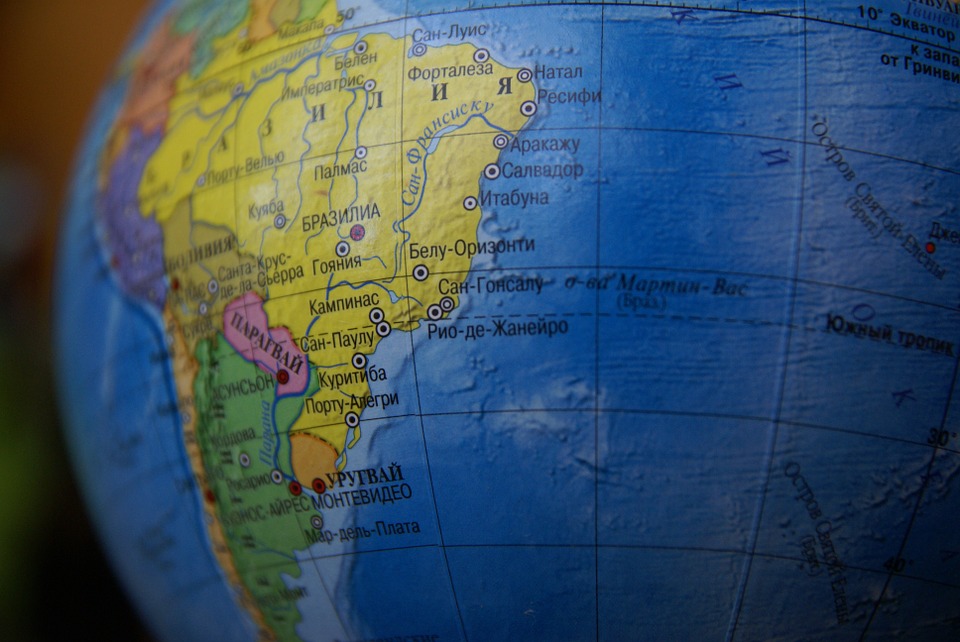In recent years Russia has been putting more emphasis on its relations with Asian countries (especially with China), which is often called “Russia’s pivot to the East”. This pivot is sometimes presented as a forced step in order to avoid isolation in the international political scene. However, this tendency is not a novelty in Russian foreign policy and corresponds to the redistribution of power in the world and the formation of a new world order.
After the collapse of the USSR, Russia’s foreign policy priorities have undergone an evolution from the West-orientated approach to a more independent stance in global affairs[1]. A very ample vision of world order was given by President V. Putin in his speech at the Munich Security Conference in 2007. The essence of this vision is that Russia does not accept the concept of the unipolar world[2]. Russia’s attempt to be an equal partner for the US and European countries did not find understanding among Western states, but Russia does not agree with a subordinate role. Russia sees the economic proof that this concept is not compatible with the reality – the economic weight of some non-OECD countries (especially, BRICS countries) that has surpassed the weight of the USA and Europe.
The formation of a new world order is the main trend of the 21st century. If after the Second World War and up to the collapse of the Soviet Union there were no doubts about the bipolar nature of the world, today there is no consensus on this issue. The US, that remained the only superpower in the 1990s, and its allies continue to perceive the world as unipolar with the US as a “hegemon”. Feeling as the only “indispensable power”[3], the US acted as a final arbiter in international relations, sometimes violating the fundamental norms of the world order.
However, in the new century, the US cannot act alone due to the redistribution of power and influence that took place recently. The shift of the center of economic development eastward is a trend that is important for the new world order formation. China has already overpassed the USA according to its GDP (PPP), while India ranks third. This inevitably leads to the desire of these new centers of economic development to have a bigger influence in international organizations and world politics. The emergence of G20 in the aftermath of the global financial crisis of 2008 illustrates that Western countries that constitute the backbone of G8 recognized the new redistribution of economic influence. This “new concert of powers” appears to replace the old Western “concert”[4].
In recent years, the initiatives of the non-West in the world order formation have become more visible, representing the common approaches of several biggest countries. As early as in 1997 Russia and China expressed their views in the Joint Declaration on a Multipolar World and the Establishment of a New International Order, emphasizing “a positive trend towards a multipolar world”. The countries confirmed their commitment to such principles as mutual respect for sovereignty and territorial integrity, mutual non-aggression, non-interference in each other’s internal affairs[5]. Later the same principles were reiterated in the joint documents of BRICS countries. For instance, in 2009 they underlined their “support for a more democratic and just multi-polar world order based on the rule of international law, equality, mutual respect, cooperation, coordinated action and collective decision-making of all states”[6].
Institutions have a structuring effect in the process of international order formation. International organizations are a specific type of institutions[7]. Russia and its Asian partners recognize the primary role of the UN and promote the creation of new organizations that would respond to their security interests, especially in their common Central-Asian neighborhood (e.g. Shanghai Cooperation Organization). Russia, China, and India are also aspiring to reduce the monopoly of financial institutions that serve the interests of the West. The distribution of voting rights is not compatible with the distribution of economic weight of their members. For instance, BRICS countries that comprise over one-fifth of the global economy together only have 11% of votes in the IMF[8]. That explains why BRICS created the New Development Bank in 2014. It demonstrates the desire to create an alternative to existing financial and economic institutions and may eventually change the global economic and financial landscape, which would be a strong economic basis of the multipolar world order.
read Europe’s security dimension: who is crossing the line?
All things considered, Russia’s pivot to Asia is not an instantaneous politically motivated shift. It is a strategic political and economic move that coincides with general global trends. Russia will try to strengthen both bilateral and multilateral ties with new fast-growing economies. In order for these relations to be strong, they must be enshrined in economic cooperation and international institutions.
writer
Maria Tonkova
ex-student, Moscow State University of International Relations, Russia
Bibliograph
[1]Bogaturov. A. TripokoleniyavneshnepolititcheskikhdoctrinRossiyi [Three Generations of Foreign Policy Doctrines of Russia]. Available at: http://www.intertrends.ru/thirteen/005.htm
[2]VystupleniyeidiscussiyanaMunkhenskoykonferentsiipovoprosampolitikibezopasnosti [The Speech and Discussions at the Munich Security Conference], February 10, 2007. Available at: http://kremlin.ru/events/president/transcripts/24034
[3]Emerging Powers in a Comparative Perspective. The Political and Economic Rise of the BRIC Countries. Ed. by VidyaNadkarni and Norma C. Noonan. N.Y.: Bloomsbury, 2013. P. 24.
[4]Shakleina T.A. Russia and the United States in Contemporary International Relations. Moscow, 2013. P. 21.
[5] Russian-Chinese Joint Declaration on a Multipolar World and the Establishment of a New International Order, adopted in Moscow on 23 April 1997. Available at: http://www.un.org/documents/ga/docs/52/plenary/a52-153.htm
[6] Joint Statement of the BRICS’ Countries Leaders, January 16, 2009. Available at: http://en.kremlin.ru/supplement/209
[7]Batalov E. Novaya institutsionalisatsiyamirovoypolitiki [The New Institutionalisation of the Word Politics]// Mezhdunarodniyeprotsessi, vol.14. no. 1 (44). January – March, 2016. P. 9.
[8] Raj M.Desai, Vreeland J.R. What the New Bank of BRICS is All About// Washington Post, July 17, 2014. Available at: https://www.washingtonpost.com/news/monkey-cage/wp/2014/07/17/what-the-new-bank-of-brics-is-all-about/?utm_term=.98d13207b692
